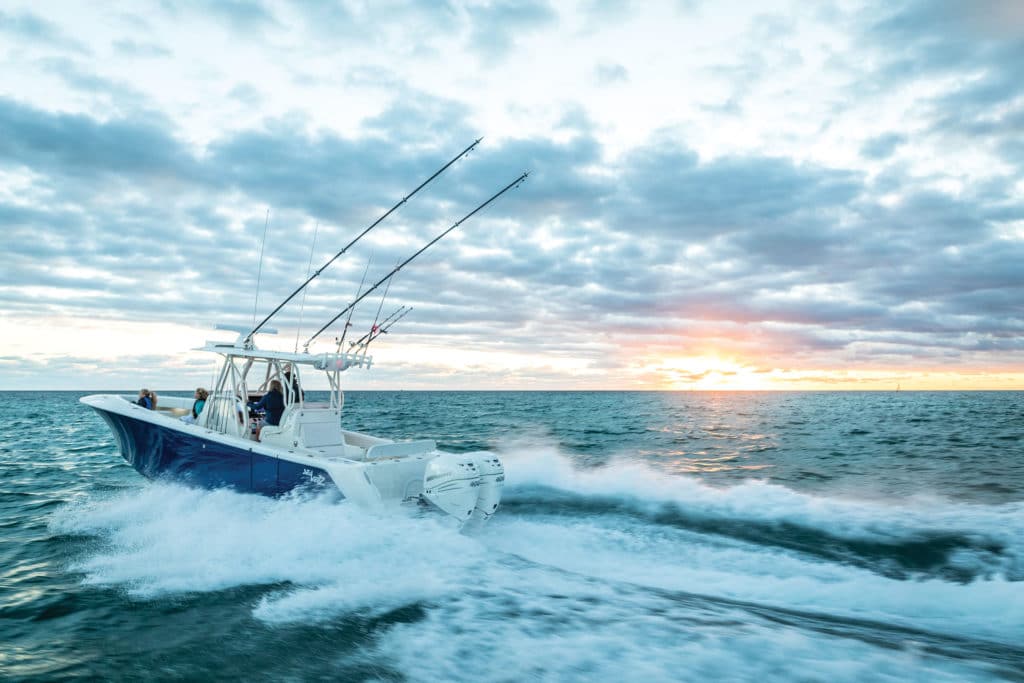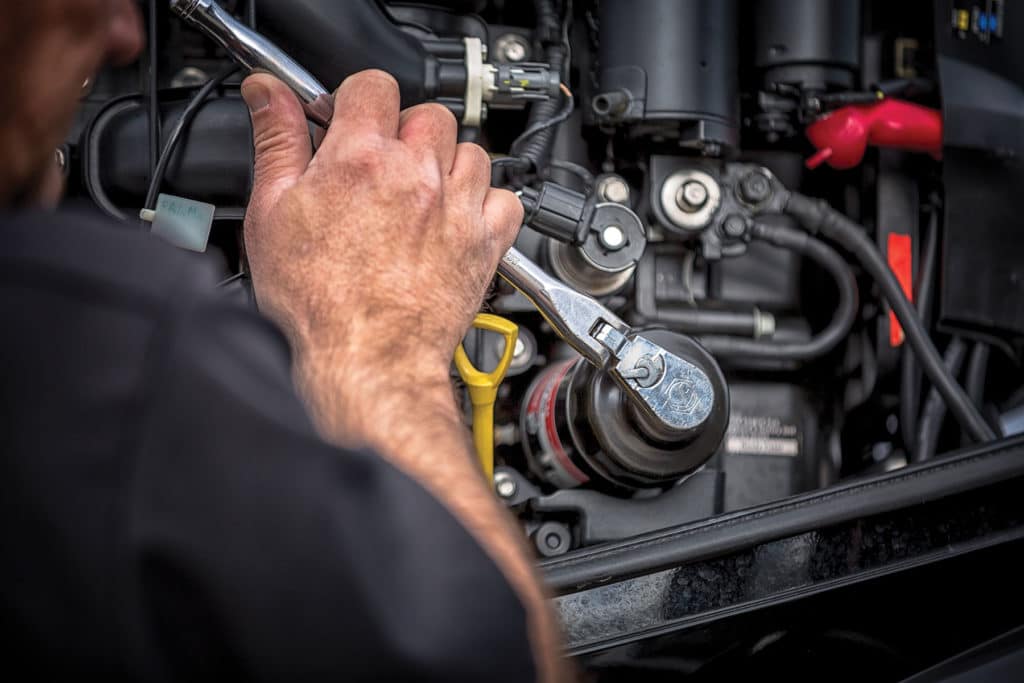
When fuel prices rise, boating anglers seek an economic antidote—something to keep our passionate pursuit of fish more affordable. Today’s outboards deliver ever-better fuel efficiency, but we can still find ways to stretch our dollars.
“I don’t charge for fuel, so it all ends up on me,” says Capt. Chris Trosset of Reel Fly Charters in Key West. Trosset runs a Contender 35 with triple Suzuki 300s. “There are a couple of things we do that help. Really, it’s having a plan, and not overloading the boat in terms of fuel and ice.”
Keeping the load light means removing gear that accumulates aboard over time. The remaining gear should be balanced to port and starboard. “Starting with a balanced load allows you to run without relying heavily on the trim tabs, which create drag,” Trosset adds. “Use them just enough to get the bow down where you want it.”
Kirk Beattie, owner of Preferred Marine, a Mercury dealer in Pompano Beach, Florida, says his first advice to new-boat buyers is to do a little homework, decide how you’ll run your boat, and don’t compare yourself to your buddy.
“Someone with the same or similar boat might not run it like you do. He might always be full of fuel, and you might be light. He also might be a 50 mph cruise guy,” Beattie says. “Learning how to run the hull you have is always key,” he adds. A traditional V-hull boat also performs differently than a stepped hull, which tends to run at the same trim angle on plane regardless of speed. “But most people don’t spend the time to test and tune.”
Running a boat properly requires learning to adjust its running attitude, and that takes practice, says Ry Landry, Yamaha product education manager. Pick a speed appropriate for the conditions you’re in, and then trim down your engines a little using the trim button on the throttle. As the boat’s bow drops, watch the gauge, he says. “You’ll see the fuel economy start to drop. Next, trim the engines up. When you see the fuel economy start to drop again, bump the trim button down a bit to find the sweet spot.”
Anglers can potentially gain some fuel efficiency at midrange by changing props. They might lose a few miles per hour at the top-end in exchange, but few boaters ever run continuously at wide-open throttle. Sometimes a dealer can provide trial props to help you dial in your boat. Make sure you change props if one becomes damaged. Dings and nicks make a difference in both performance and fuel burn.

Scheduling service with a certified dealer at regular intervals also helps keep an engine operating properly. “Oil is designed to lubricate and burn clean for 100 hours. You could run 300 hours, but you’re not doing yourself any favors,” Beattie says.
When weather kicks up the seas, most captains running into a head sea trim their engines down, dropping the bow for a more comfortable ride. Consequently, fuel economy dips. Capt. Bill Platt, who competes in Gulf and Southeast fishing tournaments, says planning for a rough-water trip means subtracting 25 percent from the normal fuel-burn rate for his 39-foot SeaHunter with triple Yamaha 425s. “You’ll go farther if you leave a little earlier and take it easier,” he advises.
With triple outboards rather than twins or quads, captains also deal with the dynamic of props pulling. For instance, two props generally spin clockwise, while the third counter rotates. That can pull one side of the vessel down underway. “If the left side is pulling you down, trim the right engine up to create downforce on the right side of the boat,” Trosset says.
Read Next: How to Conserve Fuel and Extend Your Range
Trosset also advocates the use of fuel additives such as Star Tron or Chevron Techron to keep engines running clean. And because marine growth immediately diminishes boat performance, he pressure-washes his hull every month to keep it growth-free while still keeping it in the water without bottom paint.
Running your boat efficiently and tuning your outboards will improve your financial bottom line and the time you spend on the water. Stay diligent and the day you hook a tournament-winning fish, you won’t have to worry about whether you have the fuel to make it back to the dock.
Fuel Efficiency Tips
- Changing your prop size or pitch can improve efficiency at midrange, though it might cost some top-end speed.
- Don’t overload the boat; remove extra gear that accumulates on board over time.
- Learn how to adjust the boat’s running attitude at different speeds by trimming the engine. It takes time and practice.
- Fuel additives help your engines run clean.
- Leave a little earlier and take it easier, and you’ll go farther.
- Clean your hull regularly to keep it free of marine growth, which robs some boat performance.
- If your prop gets damaged, replace it. Dings and nicks have a negative impact.









